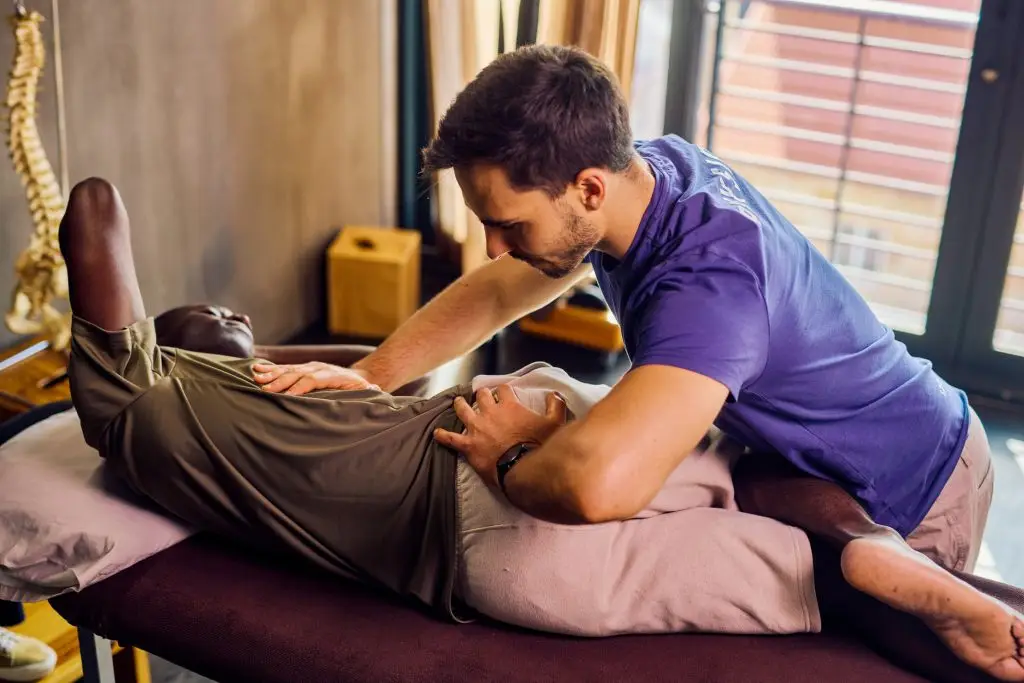One of the foundations of modern physical therapy practices is the technique of physically manipulating joints and muscles known as manual therapy. It’s the hands-on approach our experts practice day in and day out, bringing relief to people in our communities one day at a time.
So whether you’re fulfilling a referral or seeking your own treatment plan for aches or pain, our physical therapy specialists are ready to help you find the healing and relief you need.
What is manual therapy?
Manual therapy is an evidence-based approach in which physical therapists use their hands to manipulate, mobilize, and massage muscles and joints. This technique is distinct from general massage therapy as it is based not on relaxation principles but a rich understanding of human anatomy and evidence-based healing strategies. Through targeted movements, manual therapy helps in reducing pain, increasing range of motion, and accelerating recovery in ways that rest alone won’t provide.
The efficacy of manual therapy comes from stretching and moving muscles and joints in a way that stimulates the body’s natural healing processes. By addressing musculoskeletal issues at their source, manual therapists can help relieve tension, improve blood flow, and restore functionality.
Types of manual therapy techniques
In manual therapy, several techniques can be employed to address different conditions and achieve different goals. Your specific plan may involve multiple types of these techniques, according to what will be most helpful for your specific condition.
Joint mobilization
When you experience pain, it’s a powerful natural response to want to minimize movement and avoid using the part of the body in pain. However, this reaction often leads to prolonged or worsened pain, in addition to stiffness and reduced range of motion.
Joint mobilization is a technique where gentle movements are applied to joints to increase flexibility and reduce pain. This method is particularly beneficial for individuals experiencing stiffness or limited range of motion.
Strain-counterstrain
Strain-counterstrain is another effective manual therapy technique that targets muscle tension and pain. This method involves positioning the body in a way that reduces stress on affected areas, allowing muscles to relax naturally. Strain-counterstrain was developed after the recognition of common areas of spasms that occur throughout the body, which lead to tenderness and tension that this technique alleviates and helps heal.
Soft tissue mobilization
The so-called “soft tissues” of the body that physical therapists work on are not as pillowy as their name implies. The muscles, ligaments, and other flexible tissues of your musculoskeletal system are strong and resilient, each of which plays a vital role in a limb, joint, or core. However, these tissues are susceptible to tension, tightness, and damage. Sometimes, even the body’s repair process gets in the way of function, with built-up scar tissue adhering to muscle fibers.
Soft tissue mobilization focuses on breaking down scar tissue and relieving muscle tension. It involves techniques such as kneading, stretching, and friction to target areas of soft tissue dysfunction. This method is ideal for individuals who have experienced injuries or surgeries that resulted in adhesions or tightness.
Getting started with a personal manual therapy plan
Every physical therapy session begins with a consultation about your concerns and overall health, whether you made your own appointment or came in for a referral. This conversation is crucial to developing a personalized treatment plan tailored to your specific needs.
Once the assessment is complete, your therapist will explain the therapy techniques they plan to use and the expected outcomes. This is a great opportunity to ask any questions or voice any concerns you may have. Your therapist will ensure you understand the treatment process and what you can do to achieve the best results.
Following your appointment, your therapist may recommend exercises or stretches to complement the in-person appointments. These exercises are designed to enhance the effects of the treatment and support your recovery between appointments. Be sure to follow your therapist’s guidance and contact them if you experience any new symptoms or have questions about your progress.
Learn more about the success of manual therapy
Whether you’re recovering from an injury or seeking treatment for something that’s been bothering you for a long time, our manual physical therapists are here to listen to your needs and make a plan that’s perfect for your overall health goals. Learn more about our techniques beyond manual therapy by calling a clinic near you or requesting an appointment online today.

